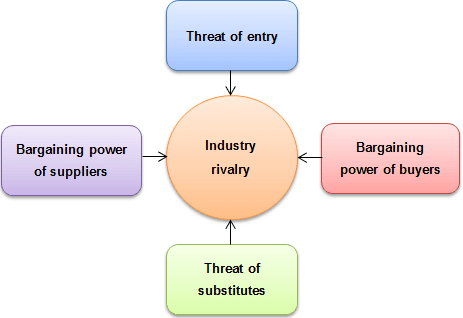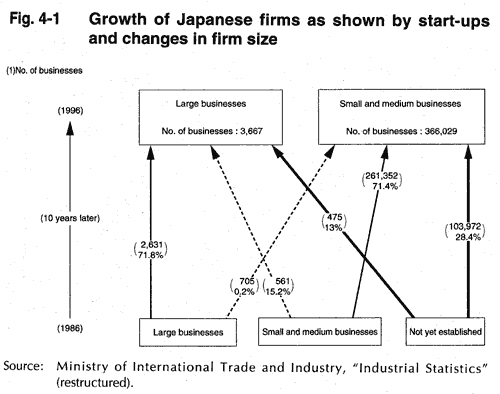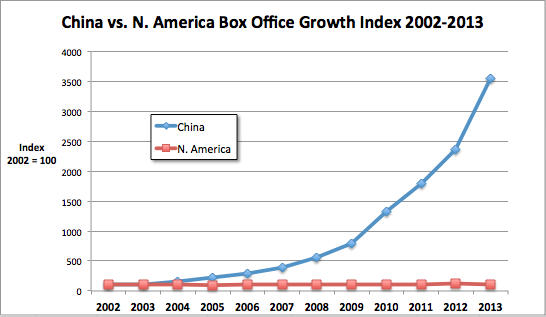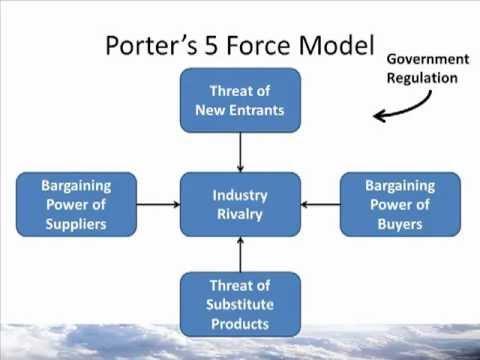Analyzis of the Japanese animation industry using Porter’s Five Forces model
Porter’s Five Force model is used to analyze the economic factors that influence the degree of competition in the marketplace. This model employs economic tools to analyze the Japanese film industry to establish how companies in the industry react to threats, and opportunities to ensure they make profits. Porter Five-Force model acts as a strategic platform for generating strategic choices (Hill and Jones 42).
However, there are limitations associated with employing this model. For instance, it does not address the size of demand or the role of government during the growth of a company. It does not focus on a particular firm, but instead analysis the whole industry. These limitations give rise to the assumption that all firms are affected by the same factors in the marketplace. Moreover, Porter’s model assumes that the intensity of competition is the only factor that affects the firm in the marketplace. Porter’s Five-Force model is used to determine the profit potential of the industry based on long-term investment opportunities (Ahlstrom and Bruton 131). The forces that affect firms in the industry include the threat of new entrants, bargaining power of suppliers, bargaining power of buyers, the threat of new substitutes and the intensity of rival (Grundy 217).
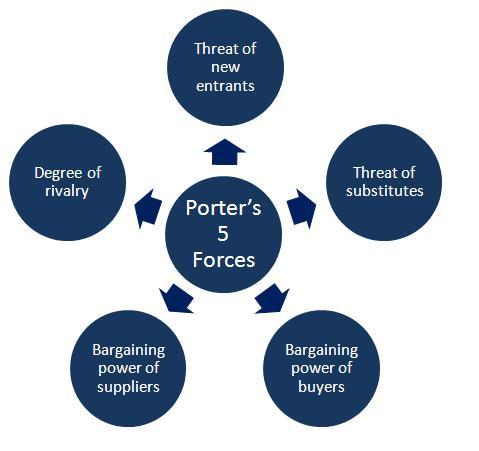
Threat of new entrant
The threat of new entrants in the film industry is controlled by the degree of competition between firms in the same industry. Companies in the same industry trying to create barriers to entry in order to reduce the level of competition. For instance, giant companies in the industry try to create barriers to entry by making film production very expensive by charging high fees for production firms.
However, the animated film industry is still easy to enter because of the lack of government policies and market regulations (Rice 382). The threat of new entrants in the Japanese animated film industry is very low. The lack of strict market barriers makes it very easy for new entrants to establish themselves in the market. For instance, the animated industry has an estimated 430 player, which is an indicator it is easy to enter the market. The threat of new entrant is very low which make it difficult for starters to be recognized in the market. For instance, the film industry has many players who prevent upcoming filmmakers from introducing their innovative products in the market. Moreover, the easy distribution channel via the Internet enables new players to penetrate the market easily.
Even a small firm with little capital can still be able to penetrate the market because of the immense distribution opportunities via the Internet. However, the cost of producing one film is extremely high which can be a barrier to entry for small companies in the industry. For instance, it cost on average about Y13million to produce one TV series, which is extremely high for starters. Moreover, high sunk costs might prevent some players from entering the market. Although the cost of producing TV series is extremely high, the animated film industry has little barriers to entry.
Bargaining power of suppliers
The bargaining power of suppliers is low. For instance, most of the activities in the Japanese film industry are conducted in-house which makes it very difficult for suppliers to increase their bargaining power. Moreover, companies in the industry have begun outsourcing in order to gain a competitive advantage. Outsourcing enables companies to lower production costs which have lowered the bargaining power of suppliers in the market.
Bargaining Power of Buyers
The bargaining power of customers in the animated industry is every high due to the availability of alternatives produces and services in the market. Consumers have many alternatives to choose from which makes them the ultimate determiner of the services to be offered in the market. Customers use different platforms via the Internet to access the services they need which increase online programming and entertainment.
Threat of substitute
The main challenge facing Japanese animated films is the threat of substitute products and services from other industries. The presence of substitute produce usually has a detrimental impact on a company’s products and services. The technology giant has the capability to increase substitute products in the entertainment industry by introducing convergences. For instance, Google and Apple Inc. allow customers to purchase films online easily. Grundy argues that the Japanese music industry has also introduced substitute services where customers can be able to obtain multiple online music and films from one site (218).
The intensity of rivalry in the industry
The degree of rivalry in the film industry is very high due to the daunting challenges for alternative delivery platforms. TV channels can now be able to deliver their programs via high-speed Internet connection cables and satellites. Moreover, different players are collaborating in order to reduce the level of rivalry in the industry. The objective of many companies in the industry is to become market leaders in order to prevent new entrant which increases the degree of rivalry.
The influence of widespread availability of high-speed broadband internet on the industry’s competitive conditions
The availability of broadband Internet in Japan continues to play a central role in improving competitiveness in the animated film industry. The availability of broadband Internet is improving competitiveness in the entertainment industry as more people gain access to the Internet. The increasing availability of broadband Internet has created new business opportunities in the animated industry because many people across the globe can now access the Internet.
Specifically, the increasing availability of broadband Internet in Japan has enabled the distribution of animated films. The broadband Internet can increase competitiveness in the industry by reducing the costs of people relocating. When there is a high-speed Internet, actors can perform their role anywhere in Japan instead of relocating skills. Many players in the animated film industry dwell in different parts of Japan.
Instead of incurring additional costs such as airplane tickets, reasonable broadband Internet can enable them to work in clusters whenever they are located. Broadband Internet can also allow audio houses to transmit files during filmmaking from demo to finish recording faster thus helping to reduce operating expenses. Moreover, filmmakers will benefit from broadband Internet because it will allow them to post the audio recording on websites where customers can comment and give their feedback after listening.
This would allow the industry to increase the quality of the films they produce. Ideally, customers understand what they want in a film thus; they can be resourceful to the industry if a broadband Internet allows them to participate in filmmaking. Moreover, a reasonable broadband Internet enables technicians to use digital editing equipment and other software to improve the quality of films. The animated film industry can become competitive by using broadband Internet when uploading extensive visual files such as edit films.
It allows filmmakers to post and update their progress online. Since the files are extremely large, a broadband Internet can help to save the amount of time required to upload one file. After the files are uploaded online, the high-speed Internet will allow editors to do their work better because they can constantly upload files to the host server easily. In simple terms, the film industry can become competitive by sharing large files with customers at a low cost.
Strategies that can be adopted by middle-size production company
Middle-size production companies should install broadband Internet that will allow them to introduce box which will increase convenience. In the film industry, convenience is the most intriguing factor for consumers. A middle-size production company can encourage customers to orders online instead of going to the movie store. A box office refers to a website created by a company where customers can pay and download movies.
Usually, these sites charge monthly subscription fees that will help the company to increase sales revenues. For instance, in the US, Netflix charges customers a monthly subscription fee for low-tech VOD Internet service (Scaria 106). These services allow customers to pay monthly subscription fees online and download movies online. A box office would allow customers in Japan to purchase movies online, efficiently which would be an efficient strategy for curbing piracy in the industry.
Flexibility is vital in the film industry that can be guaranteed by broadband Internet. Employees in the industry will be certain they can be able to operate their businesses anywhere, at any given time. Flexible services enable film companies to save cost because they can be able to host cloud-based apps without maintaining expensive systems in-house. A broadband Internet enables animated film companies to build a virtual infrastructure without incurring overheads (Plunkett 47). This allows filmmakers to focus on the core business without worrying about how much time it will take to upload files for editing. Moreover, a high-speed Internet will allow filmmakers to have access to their apps which will save traveling costs thus making lower bills in the industry a reality.
Works Cited
Ahlstrom, David, and Garry D. Bruton. International management: strategy and culture in the emerging world. Australia Mason, OH: South-Western Cengage Learning, 2010. Print.
Grundy, Tony. “Rethinking and reinventing Michael Porter’s Five Forces Model.” Strategic Change 15.5 (2006): 213-229.Print.
Hill, Charles W., and Gareth R. Jones. Strategic management theory : an integrated approach. Mason, OH: South-Western/Cengage Learning, 2010. Print.
Hillard, Robert. Information-driven business how to manage data and information for maximum advantage. Hoboken, N.J: John Wiley & Sons, 2010. Print.
Lientz, Bennet P., and Kathryn P. Rea. Dynamic e-business implementation management : how to effectively manage e-business implementation. San Diego: Academic Press, 2001. Print.
Plunkett, Jack W. Plunkett’s entertainment & media industry almanac. Houston, Tex: Plunkett Research, 2009. Print.
Porter, Douglas R. Managing growth in America’s communities. Washington, D.C: Island Press, 2008. Print.
Rice, John F. “Adaptation of Porter’s Five Forces Model to Risk Management.” Defense AR Journal 17.3 (2010): 375-388. Print.
Scaria, Arul G. Piracy in the Indian film industry : copyright and cultural consonance. Delhi, India: Cambridge University Press, 2014. Print.
Appendix
